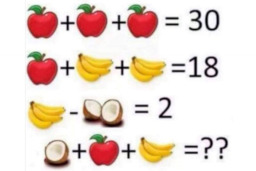
The Answer 11
You should dive towards the pair of cutlasses, for your best chance at survival.
Surprisingly, you have a 2/3 chance of grabbing a sword that's useable if you spring for the pair, as opposed to the 1/2 chance you'd be gambling on from the lone cutlass to your left.
It sounds straightforward: if there is roughly the same number of brittle cutlasses as useable pointy sticks, then the odds of the single cutlass being brittle is 50:50.
The same, however, cannot be said for the pair of cutlasses on your right. Many people's first mistake is assuming that there is a 50:50 chance of the other cutlass being brittle assuming you know one of them is: since each cutlass's probability is independent, there too must be a 50:50 chance of the other cutlass being brittle, when in fact that's completely wrong.
It's flawed because in this case, their probability ISN'T independent. This is where a little trick called conditional probability comes in, where knowing certain information changes the odds of each possibility. Let's assume you were going in blind, and had no information on the cutlasses other than the odds it will be a glorified metal stick:
- Both are brittle: BB
- Both are useable: UU
- The cutlass on the left is brittle and the other is useable: BU
- The cutlass on the right is brittle and the other is useable: UB
People make the second mistake here, thinking they can treat BU the same as UB, since the intent is to grab both cutlasses anyway. In fact, they should both be treated as two completely different outcomes: you DON'T know which cutlass is brittle, and so without that knowledge you must consider both possibilities separately.
However, the sound of a cracking sword tells you that AT LEAST ONE is brittle, so you can eliminate the possibility of two useable swords. That leaves us with:
- Both are brittle: BB
- The cutlass on the left is brittle and the other is useable: BU
- The cutlass on the right is brittle and the other is useable: UB
As we can see, out of the two outcomes, two out of three have a useable sword for us, hence the probability of a useable cutlass, based on what we CURRENTLY know, is 2/3.
One last unusual observation; if you actually DID know which of the swords was brittle, then that information actually LOWERS your odds to 1/2, because then we'd have to eliminate one of the possibilities (either BU or UB), leaving us with BB or the remaining scenario. And who said there's no such thing as too much information?
